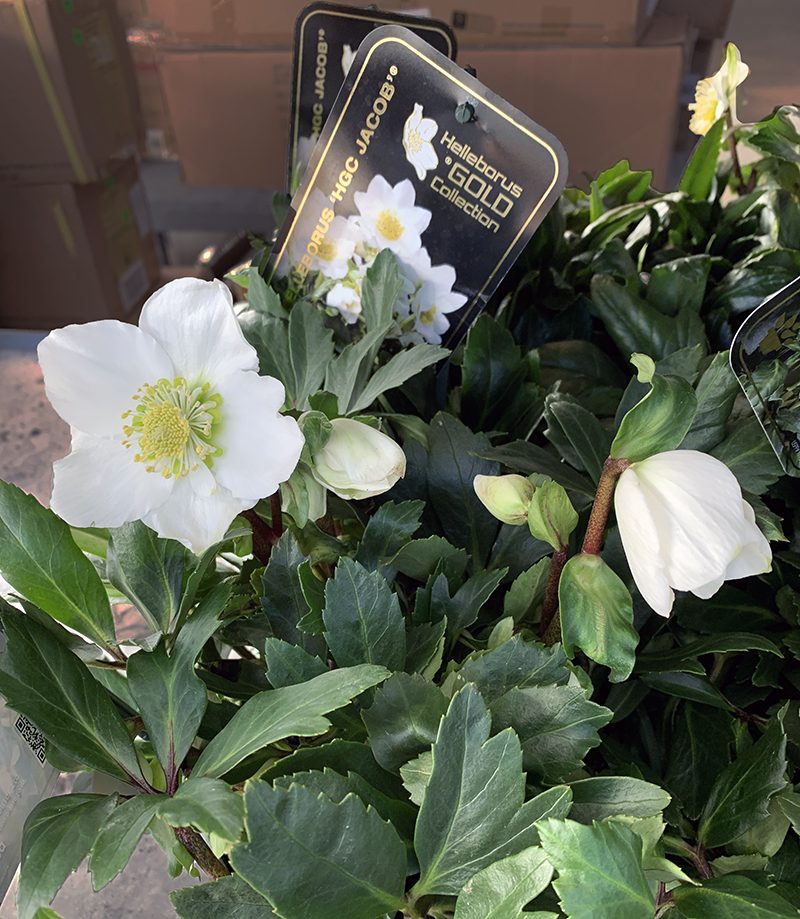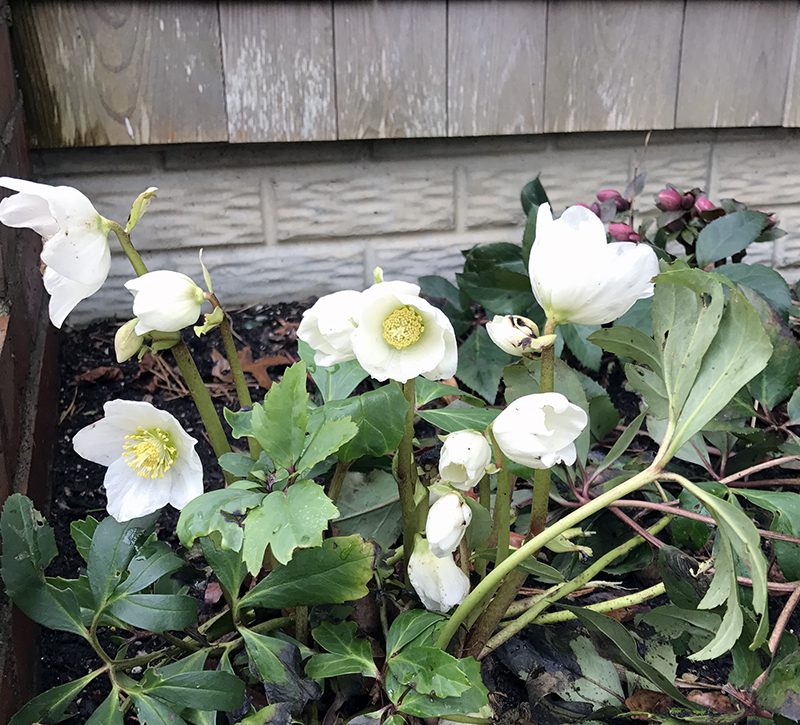It’s Hellebore Season
It’s Hellebore Season
One of the most versatile of holiday plants arrives at Hyannis Country Garden at this time of year. Helleborus niger, also known as the Christmas rose, has become a favorite among plant lovers for several reasons. Despite its common name, this is not a rose, but a member of the buttercup family, Ranunculaceae. People love this perennial because the flowers last for a long time and they can be planted outside, even in the winter. Hellebores thrive in the shade, are evergreen, and the deer or bunnies don’t eat them.
Similar to another holiday plant, the Poinsettia, the colorful part of the hellebore flower isn’t actually a petal. What looks like petals are really bracts, which are modified leaves. These create what looks like a rounded flower that often lasts for two or more months, changing from white or pink to green as the winter goes on.

If you purchase hellebores in November or December as holiday plants, here’s what you need to know.
- When these plants are indoors, keep them in a bright, cool location. This isn’t a plant for a hot, south-facing window. Although you don’t want to have the soil so wet that the plant rots, hellebores like a fairly constant moisture. Check the soil regularly and water when it starts to feel dry.
- Hellebores are all poisonous, so if you have pets or children who are prone to eating your plants, this is one you’ll want to avoid.
- After you’ve enjoyed the Christmas rose indoors for awhile, spend a week getting it acclimated to colder temperatures by putting it outside in the warmest part of the day for two or three hours, and bringing it back indoors or into a cool garage at night. After the plant is “hardened off” in this way, place it in your garden.
- After planting, water the newly placed hellebores well once a week if it doesn’t rain.
- Helleborus niger plants prefer part shade and sheltered locations. Since they flower in the winter, it’s wise to place them where you’ll see them regularly. These are also good plants to put on the top of shady retaining walls since their flowers can sometimes hang down.
- Mulch around the plants with an inch of barkvmulch or chopped leaves every year to keep soil amended and maintain moisture in the area.



- It’s better to plant this outdoors sometime in December, rather than keep them inside all winter. But if you don’t get yours put into the ground, they should be kept in the coolest room you have that has a bright but not sunny window.
- Fertilize your hellebores in the spring with an organic fertilizer, and cut away any winter-damaged foliage at that time.
- If you love the Christmas rose, plant some Helleborus orientalis, the Lenten rose, in your garden for flowers in March, April and May.
- Note that because what looks like petals are really bracts, they last a long time in cut-flower arrangements.
Subscribe To Our Newsletter
Sign up for our weekly email about sales and events.
